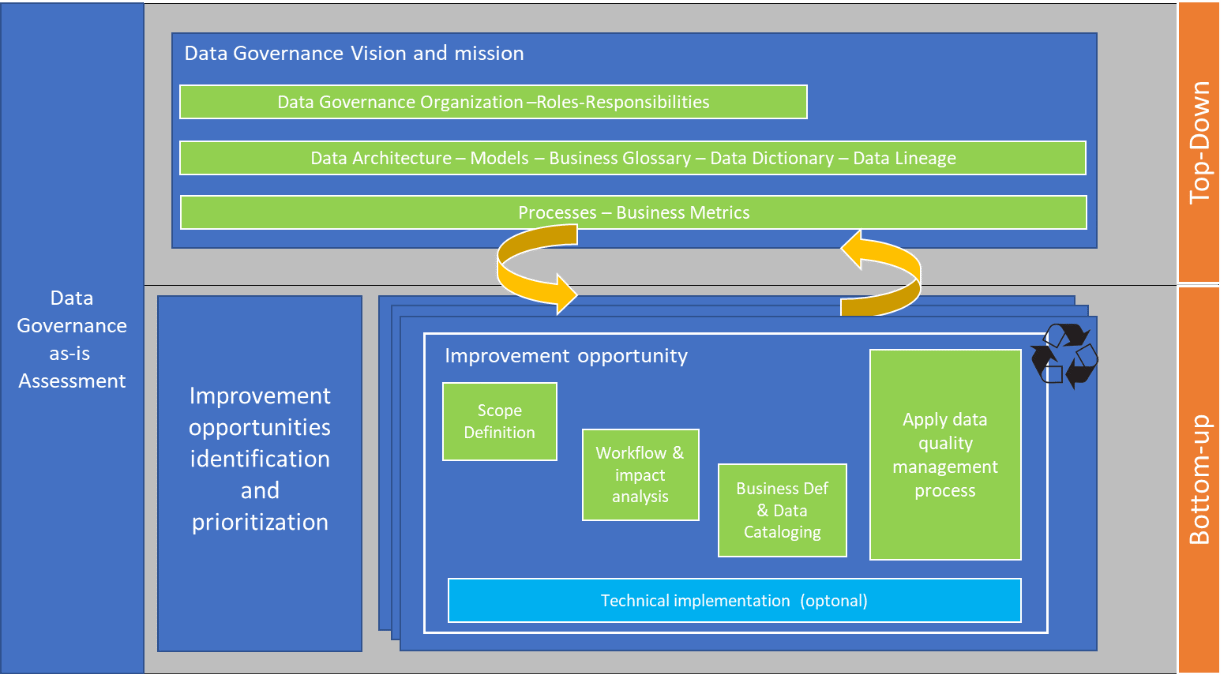The so-called “Top-Down” approach
When this approach is used, it usually means that the decision to set up data governance comes from company heads, at quite a senior level. The approach then consists of general principles that describe senior management’s final vision as regards the form that data governance should take. It is often accompanied by various guidelines that constitute a transformation plan, and includes the names of people appointed as responsible for data within the company.
When using this type of approach, data governance is often perceived or understood as being an additional and independent initiative from already identified projects.
Advantages of the “Top Down” approach
This approach has the following advantages:
- Data governance helps the company develop a long-term vision that will guide decision-making during transformation.
- It implies top management sponsorship of the transformation initiative, which is in itself a key success factor.
- It implies the development of a business case, and hence provides a powerful lever for change.
- Since a business case, has, at least implicitly, been prepared, the link between data governance and business stakes has been clearly established. This also constitutes an important lever that will justify changes and speed up transformation, as well as the implementation of data governance.
- As the vision is defined and communicated by top management, it is not easily challenged. This facilitates teams’ involvement in the transformation by reducing political conflicts between them due to differing visions.
Drawbacks of the “Top down” approach
However, the drawbacks of the “Top down” approach are very real:
- In the short term, top management’s decision to initiate the set-up of data governance offers no added value to field teams and may even be seen more as a disturbance or an additional constraint than an urgent need. The risk then is that this may dampen teams’ support for the change, or even cause outright resistance to change reactions.
- Such an approach to change can conflict with other business projects already under way as well as teams’ routine activities. This can limit their ability to implement them and could also cause resistance to change reactions.
- Similarly, organising the implementation of such a plan can be vague at best, hence leaving the burden of practical organization of the transformation plan to middle management who were not necessarily involved in its development and whose objectives may not be compatible with the plan.
- Since the set-up of data governance requires thousands of practical changes of all kinds, it is virtually impossible for top management to monitor its evolution and to efficiently oversee the implementation. As a result, the transformation is managed in a somewhat detached manner, and the risk of failure is higher.







